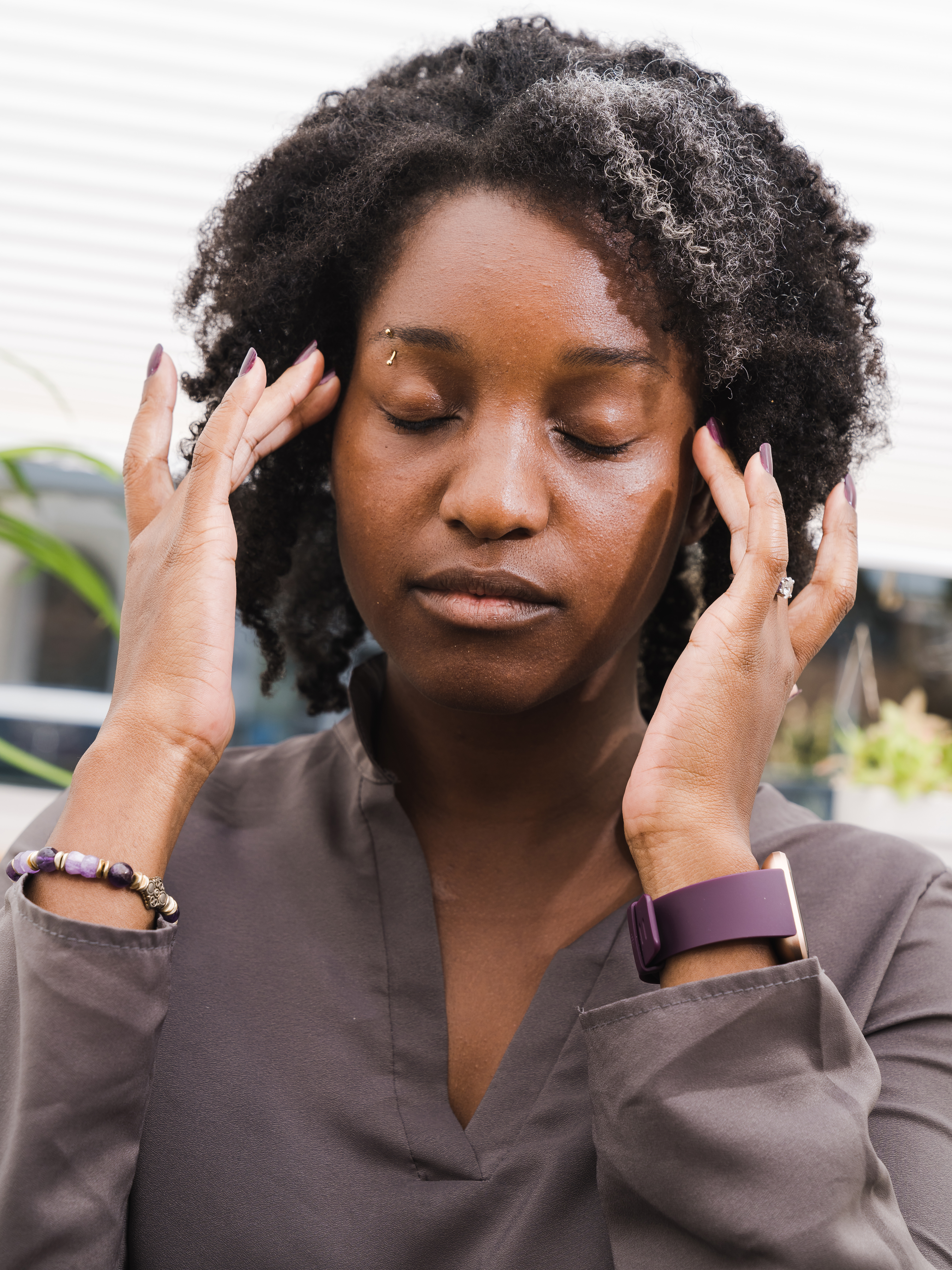I’ve struggled with anxiety for as long as I can remember, and I’ve tried everything to address it. For me, yoga, prescription medicine, and herbal teas help a lot. Meditation and ashwagandha—not so much. It’s all a trial and error process so I can build up a toolset of self-soothing skills to maintain a healthy lifestyle and not let my anxiety become a hindrance.
So when I heard about the emotional freedom technique or EFT face tapping, I was intrigued by the idea of trying a stress-relieving treatment that required no meds or yoga mats and was something I could do anywhere, anytime.
EFT, developed by Gary Craig, involves tapping on 12 meridian points (think about the principles behind acupuncture) in the body as a way to relieve pain or stress. It has been used to treat people with post-traumatic stress disorder (PTSD) on the basis that disruptions in energy cause pain and anxiety, and face tapping corrects those disruptions.
“They’re tapping on their face in places that aren’t specific acupuncture points, but they’re zones that acupuncture points are in that are for calming the body,” Dr. Tom Ingegno, DACM, MSOM, LAC, owner and licensed Acupuncturist at Charm City Integrative Health, tells Sweet July.
I tried face tapping during a particularly stressful week; I was out of my prescription medicine, fighting monster-level allergies and tackling several work deadlines. Not to mention, the air quality in my home of Chicago ranked the worst in the world for over three days. I was stressed. So I went to YouTube and TikTok (I also found this Healthline article helpful for background information, but following visual instructions was easier than written) to figure out how tapping might work for me.
“The great thing about this is that it doesn’t require any tools,” says Ingegno. “You don’t have to spend any money and there’s so many resources, so many YouTube channels and articles—and someone could become pretty competent at doing it on their own.”
You start out by identifying the issue. This could be a specific area of pain or a particular negative thought or emotion you have. And although I was mostly interested in the emotional freedom technique for my anxiety, Ingegno says it can apply to many other things. “If I was too angry, if I was too upset about something, whether it’s grief or sadness, hopefully doing EFT would help regulate all of those emotions,” he says.
After you’ve determined the emotion or physical pain, then, you rate the intensity of that negative feeling on a scale from 0 to 10, with 10 being the worst or most difficult. The idea is, let’s say you start out the session with your anxiety on a level 6 and end it on a level 3; you will have theoretically achieved a 50% reduction in anxiety.
Then, you’re supposed to come up with a phrase. So for instance, on the day that I felt overwhelmed with work, I chose to say “I can have a productive and restful day.” This is where I ran into trouble. I felt kind of corny coming up with these phrases, and it immediately took me out of the meditative space. Later, when my anxiety had increased during the bad air quality, I chose to just focus on one word: “Calm.” I found that this helped, but still felt a little weird for someone like me, who prefers to process anxiety verbally with another person, in a journal, or somatically with something like yoga or massage. Self-talk is still a bit strange for me.
The self-talk definitely got stranger and nearly impossible to focus on when I actually started doing the EFT tapping sequence. I said the phrase I’d picked as I tapped each meridian five times (I tapped them this many times because I’d picked 5 as my intensity of anxiety). The guide from Healthline with the coordinating acupuncture points is below, but not every practitioner I found on TikTok or YouTube took me through this full sequence or in this order:
- Side of hand: small intestine meridian
- Top of head: governing vessel
- Eyebrow: bladder meridian
- Side of the eye: gallbladder meridian
- Under the eye: stomach meridian
- Under the nose: governing vessel
- Chin: central vessel
- Beginning of the collarbone: kidney meridian
- Under the arm: spleen meridian
The first few times I did this, it was incredibly hard to keep track of how many times I was tapping while I repeated my phrase, and it didn’t do much to help my anxiety. When I tried just the one word “Calm,” it was much better than saying a full sentence. But keeping quiet was even more effective for me. After a few tries, I started feeling a bit calmer and more relaxed. And at the end, I felt like my anxiety was a 3 or a 4. Not a drastic change, but some change. I liked EFT face tapping for a tool, especially an easily accessible one, but I wasn’t sure if it would be as life-changing for me as it seems to be for others.
Igegno says that’s normal, that each person is going to have something they prefer. “Meditation, massage, tapping, acupuncture, float tanks…all of it is really about getting the body out of fight or flight and helping them get into that rest and digest stage where our bodies run better,” he says.







